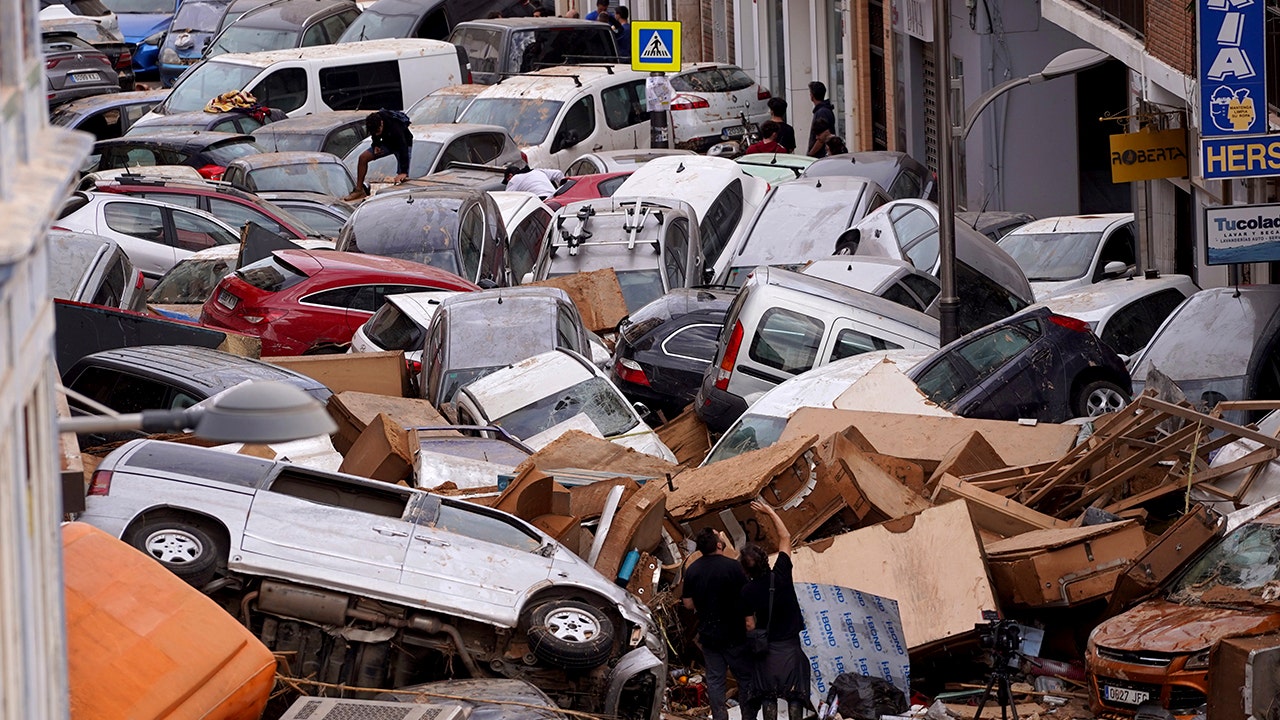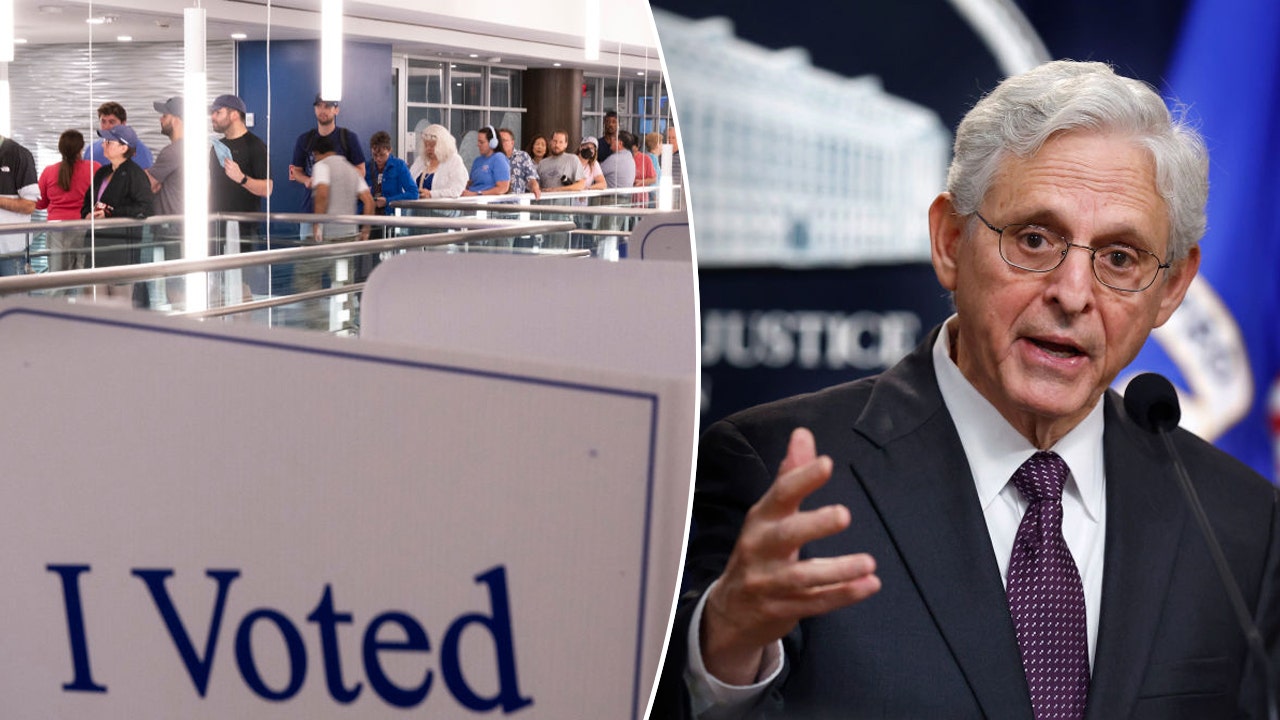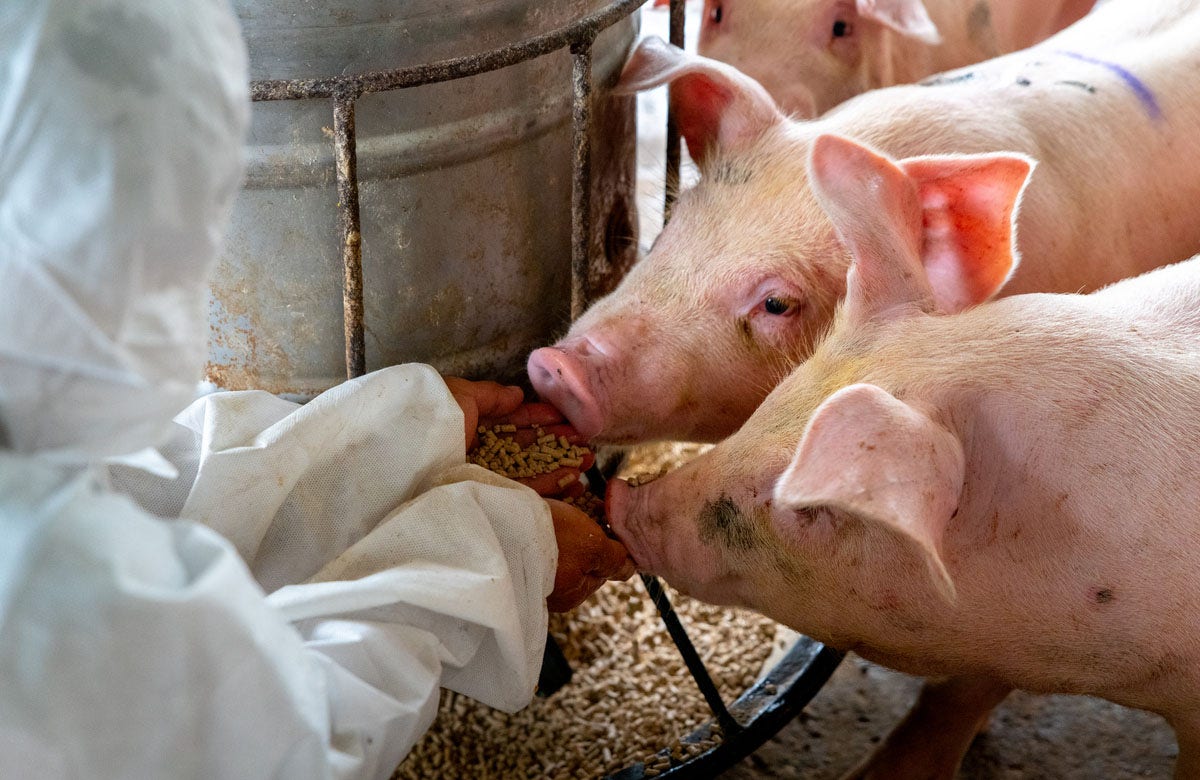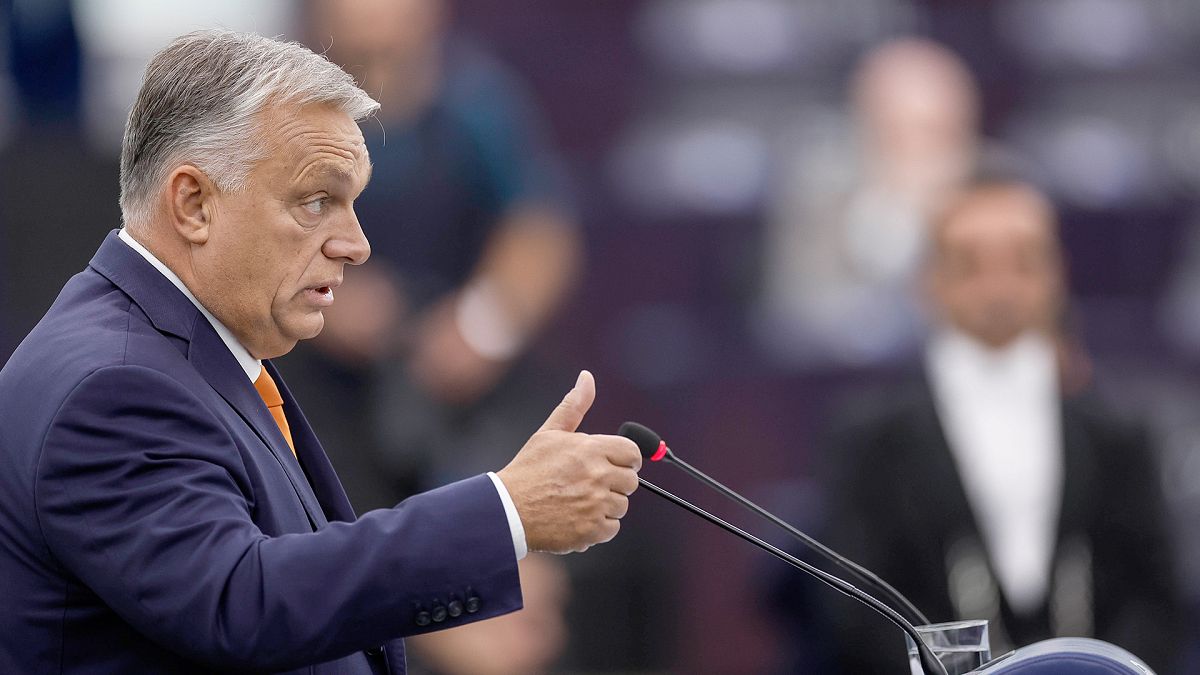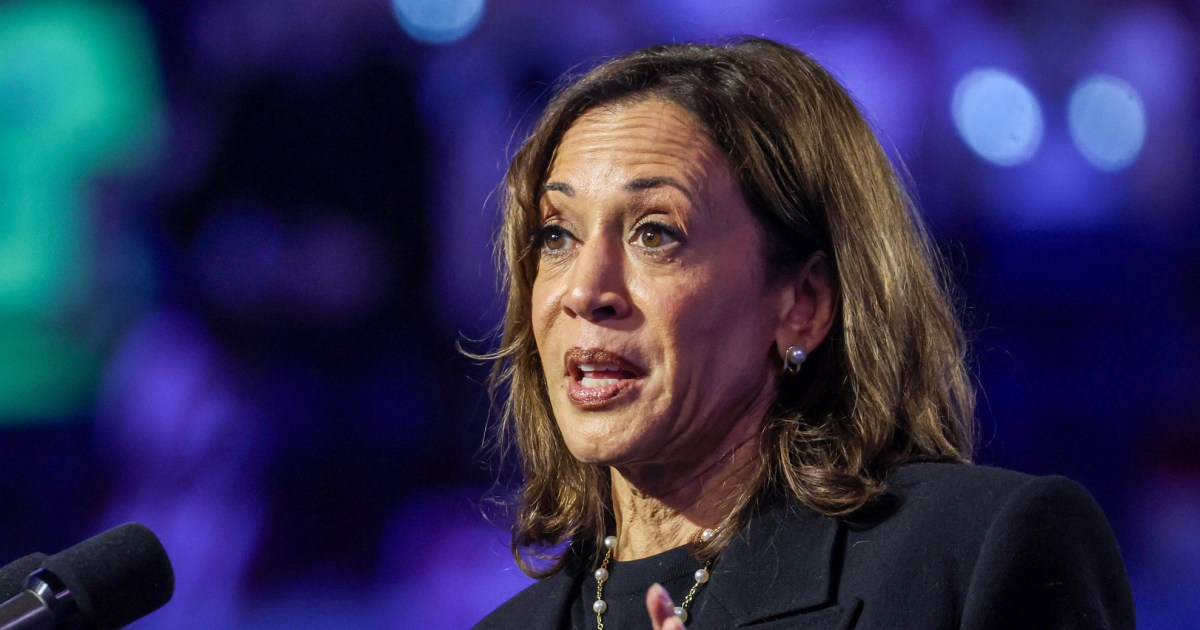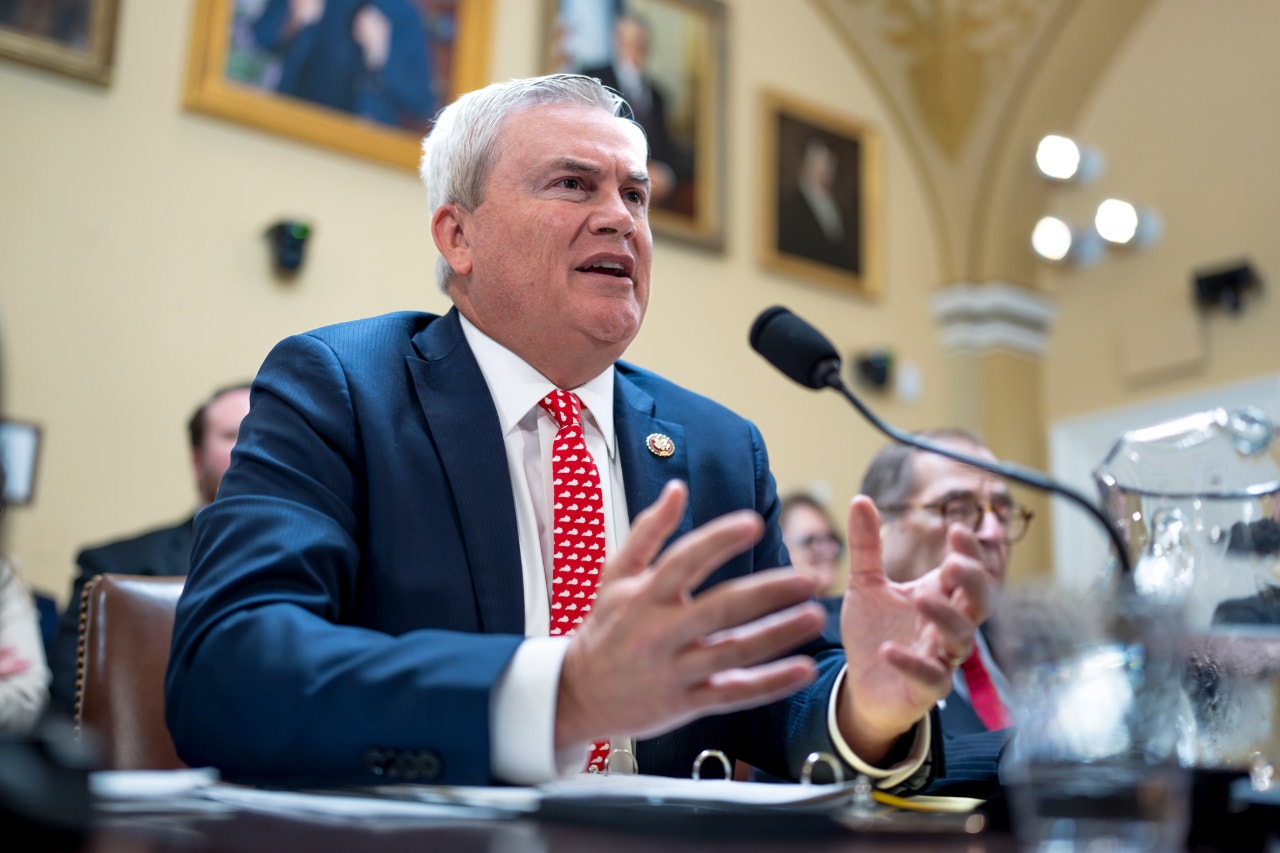California
Who’s dying now? Here’s how recent COVID deaths compare to the early months of the pandemic in California

Four years after the start of the COVID pandemic, the age and race of its victims in California have dramatically shifted: Now, a Bay Area News Group analysis finds, those who are dying from the virus are much older, and more often White than Latino, a notable switch.
While COVID deaths in California have plunged across all race and age groups, a comparison of deaths from the first six months of the pandemic to the most recent six months of data compiled by the California Department of Public Health shows 70% of those dying nowadays are 75 or older — up from just over half in early 2020.
And while Latinos made up nearly half of all Californians killed by COVID in the first six months of the pandemic, White residents now account for nearly 60% of all deaths.
The changing demographics and plummeting overall death toll exhibit how Californians built up immunity to the virus, experts say, through exposures and vaccines, and which groups are now the most vulnerable to the worst outcomes.
After four years of living with the virus, life is largely back to pre-pandemic normal. But when the virus first shut down our lives in 2020, face masks and working from home were foreign concepts to most. And while the speed of developing the first COVD vaccines was unprecedented in science, it took until early 2021 — the heart of the pandemic’s deadliest wave — for the public to get immunized. While COVID’s risk has certainly diminished, how much has its deadly wake actually changed in that time?
First, the virus is much less deadly. In the most recent six months for which data is available, from Sept. 1, 2023, through Feb. 29, 2024, there were 3,472 deaths attributed to the virus in California. But in the first six months of the pandemic, Feb. 1 through Aug. 31, 2020, more than four times that number of Californians died from COVID — 14,648.
“Wow, we are doing so much better than we were,” said Dr. John Swartzberg, clinical professor emeritus at the UC Berkeley School of Public Health, his first reaction when looking at the data.
The total number of people dying has dropped across the board in nearly every category. More people over 85 died in the first six months of the pandemic, 4,209, than the number of deaths across all age groups in the past six months.
Second, your age is a factor. While older people have always been more vulnerable, they account for an even higher proportion of COVID deaths now.
The proportion of all COVID deaths among those 85 and older has grown from 29% to 42%. But that doesn’t mean the virus is deadlier for our elders: In the first six months of the pandemic, there were three times more deaths from the virus in that 85-and-older age group than there were in the most recent six-month period.
However small the number, there is one statistical peculiarity: The two youngest age groups are the only ones that saw more deaths in the past six months than early in the pandemic.
No deaths were reported among children younger than 14 in the Golden State through Aug. 31, 2020, but three young children have died from COVID, including two children under 5, in the last six months.
While deaths have become more concentrated among older Californians, another factor has changed dramatically: the racial breakdown of the people dying.
Early in the pandemic, “Blacks and Latinos struggled much more … in terms of mortality rates than any other population, primarily compared to Asian and White populations,” Swartzberg noted. “But that has flipped.”
The percentage of Californians who died who are White has nearly doubled, from 30% to 60% of all COVID deaths, from 4,332 deaths through August 2020, to 2,065 deaths in the most recent period. White people make up 37% of the state’s residents.
Moving in the other direction, the proportion of Latino deaths among those who died from COVID has shrunk from 49% of the first six months to just 20% of recent deaths. Latino people make up 39% of the state’s residents.
California’s Latino population is younger and therefore less at risk, Swartzberg said.
And he has some more educated guesses as to why the early pandemic death trends among racial groups have flipped so dramatically: In the first years of the pandemic, many Black and Latino communities were not getting vaccinated as quickly as their White counterparts, a combination of lack of access and insufficient outreach, but that has changed as the pandemic has evolved.
A November 2023 poll by KFF, a nonprofit health care research foundation, found a slightly higher percentage of Black and Hispanic adults reported getting an updated vaccine, compared to 19% of White adults. And the gap grew when adding those who planned on getting the new vaccine but hadn’t yet, 59% of Black and Hispanic adults and just 42% of White adults. The poll also found White adults were less likely to take precautions against catching and spreading the virus during this past holiday season.
Dr. Peter Chin-Hong, a UCSF professor of medicine who specializes in infectious diseases, also points to political influence on vaccine uptake as “one of the most compelling trends.”
The KFF poll found Democrats were twice as likely as Republicans to say they had already gotten the updated vaccine, while 55% of Republicans said they would “definitely not get” the new vaccine compared to 12% of Democrats and 40% of independents.
“In the beginning, none of this was political … we were all in this together,” said Chin-Hong. “The differential in mortality was based on structural racism and lack of access, underlying medical problems. But then it became a very polarizing issue, like everything regarding COVID.”

California
Are ‘ballot selfies’ allowed at California voting sites?

Tips for coping with election stress
In a recent poll by the American Psychological Association, 69% of adults cited the upcoming election as a significant source of stress in their lives.
OAKLAND, Calif. – You’re at your polling place. You’re excited about taking part in the democratic process. You want to document the moment and perhaps share it on social media. Can you take a selfie at your polling place?
In California, the short answer is, “Yes.”
But as long as you do not violate any other law. And elections officials and poll workers ultimately have the discretion to prohibit the selfie if they determine the action is causing disruption that requires a response.
SEE ALSO: Nearly 50% of voters say deepfakes had some influence on election decision: Survey
State elections officials also note that the photos cannot result in the unauthorized sharing of and use of information relating to how a person has voted.
They also stress that taking photos at the polling place cannot compromise the privacy of other voters casting a ballot.
In addition, it’s illegal to intimidate other voters or interfere with the elections process or with the duties of elections workers.
So-called “ballot selfies” haven’t always been legal in California, and they’re not legal in all states.
California’s law changed on Jan. 1, 2017, allowing voters to “voluntarily disclose how he or she voted if that voluntary act does not violate any other law.”
Prior to that, the Secretary of State’s office historically took the position that the use of cameras and video equipment at polling places was prohibited.
Here’s a look at activities banned at California polling sites:
- DO NOT ask a person to vote for or against any candidate or ballot measure.
- DO NOT display a candidate’s name, image, or logo.
- DO NOT block access to or loiter near any ballot drop boxes.
- DO NOT provide any material or audible information for or against any candidate or ballot measure near any polling place, vote center, or ballot drop box.
- DO NOT circulate any petitions, including for initiatives, referenda, recall, or candidate nominations.
- DO NOT distribute, display, or wear any clothing (hats, shirts, signs, buttons, stickers) that include a candidate’s name, image, logo, and/or support or oppose any candidate or ballot measure.
- DO NOT display information or speak to a voter about the voter’s eligibility to vote.
- DO NOT engage in electioneering; photograph or record a voter entering or exiting a polling place; or obstruct ingress, egress, or parking
California is also one of about a dozen states and Washington, D.C. that has a complete ban on guns at polling sites, either open or concealed.
As for what voters should bring when going to cast their ballot, in some, but not most cases, a California voter may be required to show identification, according to the Secretary of State’s office.
Voters casting their ballot for the first time after mailing in their registration to vote may need to show proof of ID if they did not provide their driver’s license number, California identification number or the last four digits of their social security number on their registration form.
Here’s a list of acceptable forms of voter identification to use at polling places.
KTVU has compiled a comprehensive California voter guide with key information and election-related dates to help ensure your vote counts.
You can also find a link to our 2024 Election coverage here, where you can find information about candidates as well as state and local ballot measures.
California
Here are the 100 California residents giving the most in the race for the White House

When it comes to presidential fundraising, California is a juggernaut.
The Golden State is home to a large group of uber-wealthy donors with some of the deepest pockets in the nation — money that could help swing the presidential election next week between Vice President Kamala Harris and former President Donald Trump.
Harris would be expected to have a clear fundraising advantage: she’s a California native who served as the state’s junior senator and attorney general. Trump has frequently bashed California and its leaders on a range of issues and in the 2020 presidential campaign lost the state by nearly 20 percentage points.
In 2020, President Joe Biden’s campaign raised more than $145 million from Californians, the most from any state in the nation, campaign finance disclosures filed with the Federal Election Commission showed.
While California is overwhelmingly Democratic, it is a major source of Republican campaign dollars — Trump raised $333 million in the state for his 2016 campaign committee, according to the Center for Responsive Politics.
The Times analyzed federal election data to identify the biggest donors hoping to sway voters in this year’s race. The records reviewed include individual contributions from donors residing in California as of Sept. 30.
Not surprisingly, Harris supporters dominate the list of largest donors, taking up 89 of the top 100 spots. In fact, 48 of the top 50 givers from California all donated to pro-Harris fundraising committees.
Looking at her top 100 donors nationwide, Harris is getting a much larger share of support from big-time California contributors. Those state residents have collectively given more than $53 million — over half of the total $102 million received from her biggest donors.
It’s a completely different picture for those supporting Trump. Only nine of his top 100 donors were from California, giving over $8 million combined, or just 5% of the $161 million haul from his largest givers.
Here’s a closer look at some of the biggest donors in the state.
Megadonors come out strong for Harris
Haim Saban, Chairman/CEO of the Saban Capital Group: $1,852,599
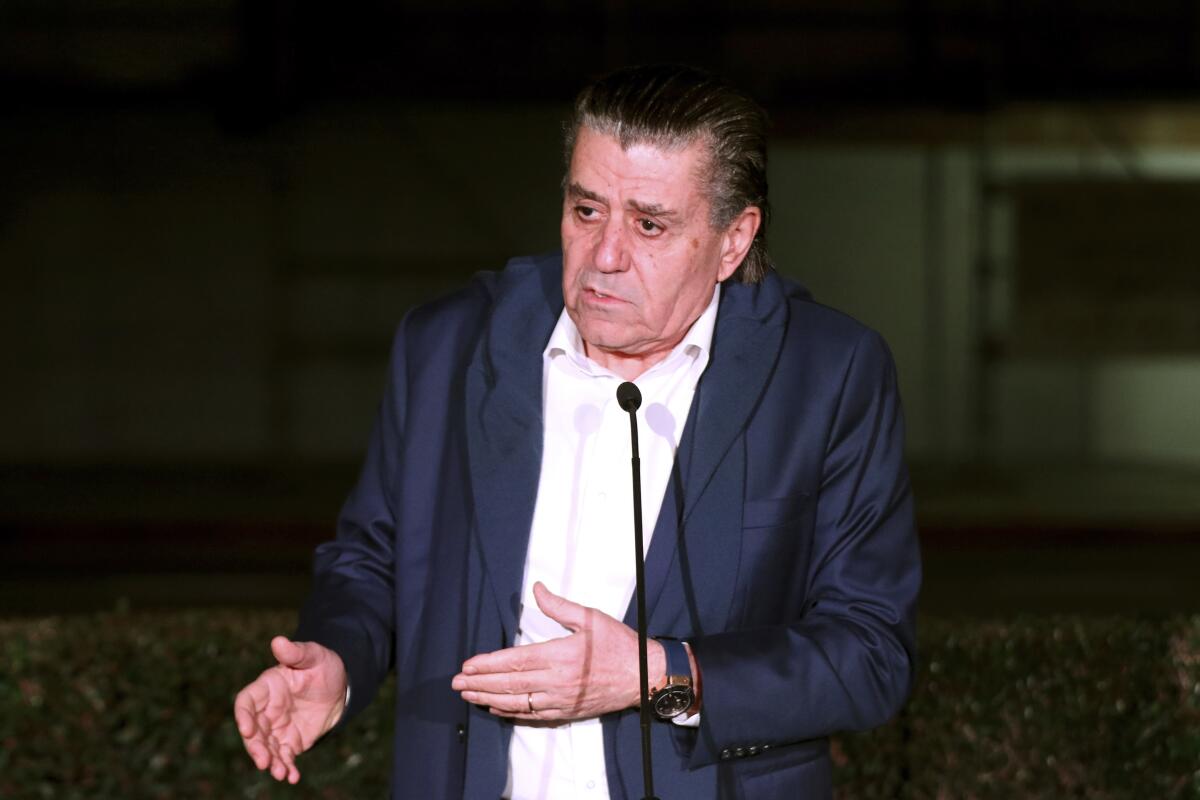
Haim Saban
(Willy Sanjuan / Willy Sanjuan/invision/ap)
The Israeli American billionaire has been an outspoken supporter of Israel’s right to defend itself against Hamas. In October, Saban said Harris was clearly the better choice for the US-Israel relationship and Israel’s safety and security.
“Kamala Harris has a stellar record throughout her career, strengthening this critical alliance,” he wrote in an opinion piece. “Unlike Trump, Harris has demonstrated a lifelong commitment to the American Jewish community and Israel. The choice for Jewish voters and all voters could not be more straightforward.”
The Hollywood media mogul has been a reliable ally for Democrats, hosting a Biden fundraiser at his sprawling Beverly Park estate in February. Tickets to the fundraiser cost up to $250,000 and actor Jane Fonda and comedian Greg Proops were reported to have attended.
Reid Hoffman, venture capitalist at Greylock: $1,682,600

Reid Hoffman
(Getty Images)
The LinkedIn co-founder has also donated $7 million to the Future Forward PAC, a Democratic super PAC. Hoffman drew criticism in July for calling for Harris to oust Federal Trade Commission Chairwoman Lina Khan, who has brought antitrust cases against Big Tech and introduced rules to protect workers.
In an interview with the Wall Street Journal, Hoffman explained his support for Harris and said he believes Trump’s plan for increased tariffs would hurt the economy.
“Tariffs and trade wars are terrible ideas for businesses, terrible for Silicon Valley,” Hoffman said. “I think stability and trying to actually have institutions and the rule of law are more important than a 2% cut in a tax rate.”
Steven Spielberg, filmmaker: $1,429,600
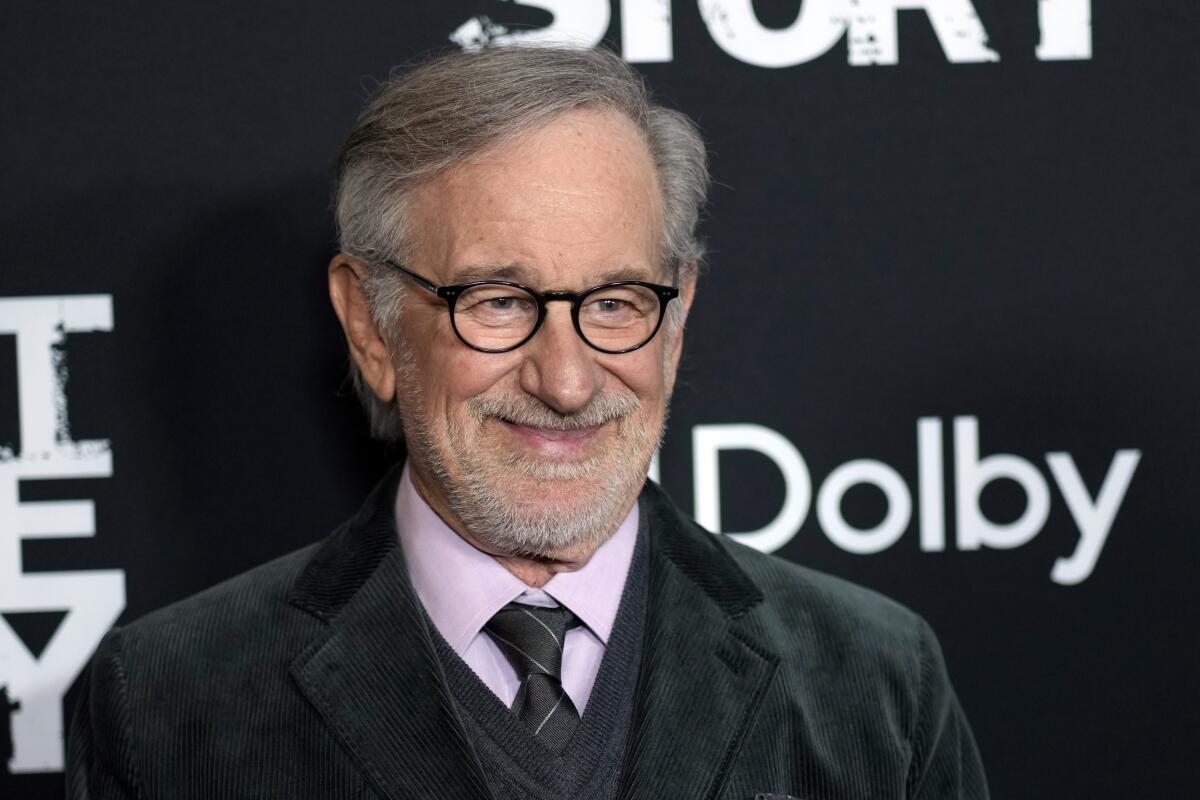
Steven Spielberg
(Charles Sykes / Invision / Associated Press)
The growing unease with Biden’s disastrous debate performance in June led some celebrities to call for him to drop out of the race. Once Harris took the Democratic mantle, Hollywood heavyweights began giving more to the vice president, including Spielberg who gave an additional $500,000 in late September, federal election data shows.
“We are all in for Kamala and have been since the moment she announced,” said Andy Spahn, a Los Angeles political consultant to Spielberg and other media moguls. “Tremendous excitement and energy here around Kamala’s candidacy. We are all in.”
Sean Parker, owner of Parker Media, LLC: $1,389,250

Sean Parker
(SOPA Images/LightRocket via Getty Images)
Parker is best known as the founder of Napster and first president of Facebook where he made his fortune. The Silicon Valley tech billionaire depicted in the film “The Social Network” is now a venture capital investor and has gotten more into traditional politics over the years.
In 2016, he hosted a fundraiser at his Los Angeles home that netted $1 million in donations for Hillary Clinton.
He used his tech influence to push for the creation of the Opportunity Zone program, an economic development tool that aimed to encourage investment in low-income communities through tax incentives. However, a Times report found it has instead generated billions of dollars’ worth of tax breaks for the wealthy often in pursuit of luxury high-rises, high-end hotels and swank office space.
Seth MacFarlane, founder of Fuzzy Door Productions: $1,023,000

Seth MacFarlane
(Dan Steinberg / Invision For The Television Academy)
The creator of “Family Guy” and “American Dad!” has been making big donations to Democrats in recent elections. In 2016, he gave more than $716,700 to two political action committees supporting Clinton’s presidential bid.
After MacFarlane contributed $2.5 million to Democrats in 2018, his company, Fuzzy Door Productions, was ranked second in Hollywood giving behind DreamWorks SKG, according to data from OpenSecrets.org, a nonprofit research group tracking money in U.S. politics.
Scooter Braun, founder of SB Projects: $519,600
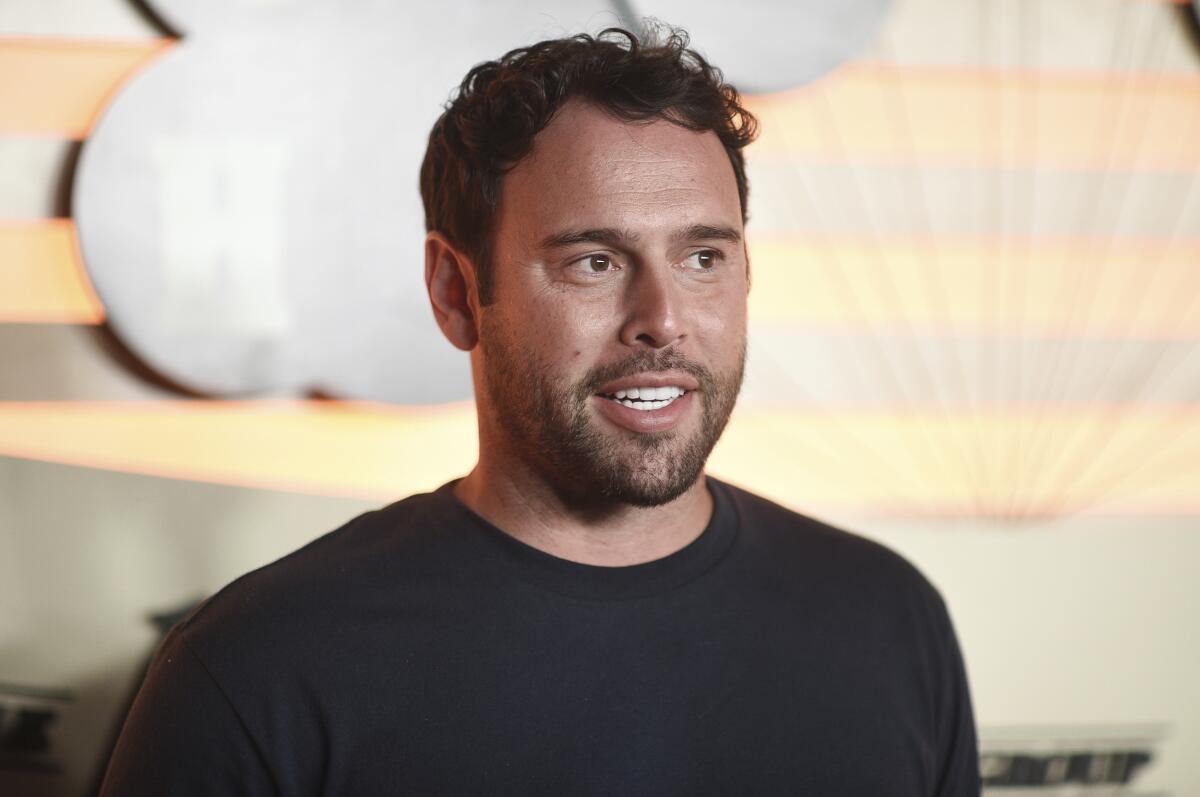
Scooter Braun
(Richard Shotwell / Richard Shotwell/invision/ap)
The former music manager has worked with pop stars including Justin Bieber, Ariana Grande and Taylor Swift. He also famously feuded with Swift over the rights to her master recordings.
After Swift endorsed Harris for president in September, Trump posted “I HATE TAYLOR SWIFT!” on his social media site Truth Social. Braun quickly made his own endorsement on Instagram: “Shake It Off Donald,” he wrote. “Kamala 2024.”
Trump’s biggest boosters
Barbara Grimm-Marshall, former co-owner of Grimmway Farms: $1,256,600

Barbara Grimm-Marshall
(Alex Horvath / The Californian)
The Bakersfield resident is the former co-owner of the world’s largest grower of carrots. In 2020, half of all baby carrots consumed in the U.S. were processed by Grimmway Farms, which was later sold. She is the founder and CEO of the Grimm Family Education Foundation, which aims to help students in underserved communities of Kern County.
Grimm-Marshall also donated $350,000 to back Trump in the 2020 election.
Douglas Leone, founder of Sequoia Capital: $1 million
Boasting a net worth of $8 billion, the venture capitalist supported Trump in the 2020 contest but renounced his support after the Jan. 6 Capitol attack, according to a statement issued shortly after: “After last week’s horrific events, President Trump lost many of his supporters, including me,” Leone said. “The actions of the President and other rally speakers were responsible for inciting the rioters.”
But this summer he changed his tune again, endorsing Trump in a post on X.com: “I have become increasingly concerned about the general direction of our country, the state of our broken immigration system, the ballooning deficit, and the foreign policy missteps, among other issues,” he wrote. “Therefore, I am supporting former President Trump in this coming election.”
Leone made the $1-million donation to America PAC, started by former California resident Elon Musk, who has been feverishly campaigning for Trump recently, even appearing with him at rallies in Butler, Pa. and at Madison Square Garden.
Ranked by Forbes as the richest person in the world, Musk has given almost $75 million to America PAC — the super PAC he created this summer. In the past three months, America PAC has spent more than $100 million to support Republican candidates, according to federal election data.
Carl Barney, founder of a for-profit college chain: $924,600
Barney, who operated a group of for-profit colleges for years, is a noted proponent of Ayn Rand’s philosphy of objectivism.
On his website, Barney said he supports Trump because he approaches the job of president “as a businessman, not a politician.”
“Based on his actions in his first term as President, I judge that Donald Trump’s assets far outweigh his liabilities,” he wrote. “I especially like that President Trump wants to work with Elon Musk to reduce spending, regulations, waste, and fraud in the federal government. As Mr. Musk predicts, it will lead to an era of great prosperity. I agree.”
Marc Andreessen, founder of Andreessen Horowitz: $844,600

Marc Andreessen, left, stands next to his longtime business partner, Ben Horowitz.
(Paul Sakuma / Associated Press)
The tech venture capitalist hasn’t been shy about supporting Trump and Republican candidates in general. His venture firm has given $44 million to Fairshake, the leading crypto campaign fund supporting Republican candidates.
Formerly a vocal Democrat, Andreessen has shifted to the right in recent years because of a belief that Trump could help remove regulations that could stifle innovation in artificial intelligence and cryptocurrency. He has criticized investigations by the U.S. Securities and Exchange Commission into crypto startups and the hurdles crypto businesses face in getting financing from banks.
“This is a brutal assault to a nascent industry that has never happened before,” Andreessen said on “The Ben & Marc Show” podcast, acknowledging that his firm is one of the largest cryptocurrency investors in the world.
Geoffrey Palmer, owner of G.H. Palmer Associates, $819,600

Real estate developer Geoffrey Palmer
(Los Angeles Times)
A billionaire real estate developer and prominent donor to Republican causes, Palmer hosted a Trump fundraiser in 2019 at his Beverly Hills mansion, where tickets cost as much as $100,000 per couple, according to an invitation. Palmer also hosted a fundraiser in 2017 for former Vice President Mike Pence at the same mansion.
According to Forbes, Palmer is worth $2 billion. His G.H. Palmer Associates is one of the largest owners of apartments in California, according to commercial real estate firm CoStar. Palmer’s massive L.A. apartment complexes include the Orsini and the Lorenzo.
Deborah Magowan, Retired: $711,600
The wife of the late San Francisco Giants owner Peter Magowan, she donated more than $200,000 to Trump in the 2020 campaign, a Times analysis found. She also gave $100,000 to Republican candidates in the 2022 midterm elections.
Times staff writer Gabrielle LaMarr LeMee contributed to this report.
California
Clear weather expected for Halloween in Southern California, rain coming Saturday

The first significant rainfall of the season is expected to hit Southern California on Saturday, Nov. 2. This will follow a warm, dry Halloween day.
On Saturday, the National Weather Service expects a low-pressure system to move over Southern California, causing some rain across the area beginning in the afternoon through evening hours.
Meteorologists expect around a quarter of an inch of rain in Los Angeles County. In Orange County and the Inland Empire, more rain is expected in mountain areas, and meteorologists predict between a quarter of an inch and half an inch in lower elevation areas.
On Sunday, meteorologists expect scattered showers in the morning, but areas should remain dry.
The rainfall wasn’t expected to have a major impact on a possible World Series game Saturday or celebrations over the weekend.
But the NWS said drivers may see some traffic issues as the first big rainfall of the season could cause slick roads.
Earlier in the week, meteorologists expect mostly clear conditions on Halloween, Thursday, Oct. 31.
High temperatures Thursday are expected around the low 70s in the Inland Empire and the inland areas of Orange County, while coastal cities will have a high in the mid-60s. By the time for trick-or-treating, temperatures will fall to the low to mid-60s.
In Downtown L.A., Halloween temperatures are expected to reach a high of 69 with a low of 58. Highs will reach 71 in the San Fernando Valley with lows around 48, and in coastal L.A. cities, highs are predicted around 68 degrees with lows around 52.
Originally Published:
-

 Movie Reviews1 week ago
Movie Reviews1 week agoAlien Country (2024) – Movie Review
-
/cdn.vox-cdn.com/uploads/chorus_asset/file/25431700/STK201_SAM_ALTMAN_CVIRGINIA_A.jpg)
/cdn.vox-cdn.com/uploads/chorus_asset/file/25431700/STK201_SAM_ALTMAN_CVIRGINIA_A.jpg) Technology7 days ago
Technology7 days agoOpenAI plans to release its next big AI model by December
-

 Health6 days ago
Health6 days agoNew cervical cancer treatment approach could reduce risk of death by 40%, trial results show
-

 Culture7 days ago
Culture7 days agoTop 45 MLB free agents for 2024-25 with contract predictions, team fits: Will Soto get $600M+?
-

 Sports5 days ago
Sports5 days agoFreddie Freeman's walk-off grand slam gives Dodgers Game 1 World Series win vs. Yankees
-
News5 days ago
Sikh separatist, targeted once for assassination, says India still trying to kill him
-

 Culture5 days ago
Culture5 days agoFreddie Freeman wallops his way into World Series history with walk-off slam that’ll float forever
-

 Technology4 days ago
Technology4 days agoWhen a Facebook friend request turns into a hacker’s trap







/cdn.vox-cdn.com/uploads/chorus_asset/file/25697380/STK071_APPLE_A.jpg)
